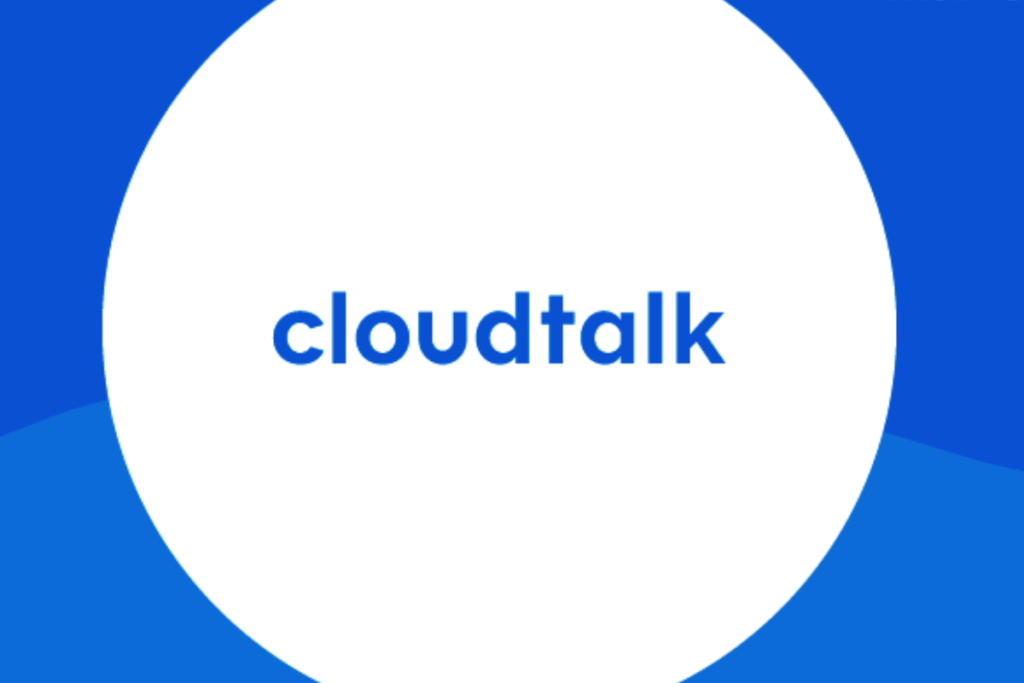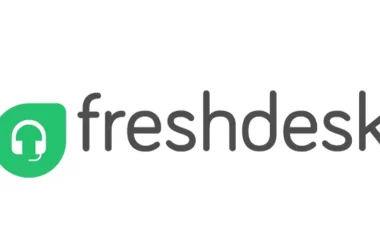In the fast-paced realm of cloud communication solutions, finding the right platform can be a game-changer for businesses aiming to enhance customer engagement and streamline their operations. While CloudTalk has gained prominence for its features, it’s essential to explore alternatives that might better suit specific needs. In this comprehensive guide, we delve into various CloudTalk alternatives, shedding light on their features, limitations, and what sets them apart.
Understanding CloudTalk

Embarking on a deeper exploration of CloudTalk requires a comprehensive understanding of its features, limitations, and the unique aspects that set it apart in the realm of cloud-based call center solutions.
Features of CloudTalk
- Intuitive User Interface: CloudTalk boasts an interface designed for ease of use, ensuring that both agents and administrators can navigate the platform effortlessly.
- Comprehensive Analytics: The platform provides robust analytics tools, offering real-time insights into customer interactions and call center performance for informed decision-making.
- Seamless Integrations: CloudTalk facilitates seamless integrations with various third-party tools, allowing businesses to consolidate their communication and streamline workflows.
- Call Recording Capabilities: A fundamental feature, CloudTalk enables the recording of calls, providing a valuable resource for training purposes, compliance, and quality assurance.
- Versatile Communication Channels: Beyond voice, CloudTalk supports diverse communication channels, including chat and email, ensuring businesses can engage with customers through their preferred methods.
Limitations of CloudTalk
- Limited Customization Options: Some users have reported limitations in customization, which may restrict the platform’s adaptability to specific business processes and preferences.
- Potential Scalability Challenges: As businesses grow, there might be challenges in scaling CloudTalk to meet increasing communication demands, impacting its suitability for rapidly expanding enterprises.
- Dependency on Internet Connectivity: Being a cloud-based solution, CloudTalk relies on Internet connectivity, and interruptions may affect the platform’s accessibility and performance.
- Learning Curve for Advanced Features: While user-friendly, the learning curve for advanced features may be steeper, potentially impacting the efficient utilization of the platform’s full capabilities.
- Cost Considerations: Depending on usage and feature requirements, some businesses find CloudTalk’s pricing structure to be on the higher side, necessitating careful budget considerations.
What Sets CloudTalk Apart?
CloudTalk’s distinctive features include a user-friendly interface, real-time analytics, and robust integrations. However, the evolving landscape prompts businesses to assess whether CloudTalk aligns with their evolving needs.
The Need for CloudTalk Alternatives

As businesses grow, their communication requirements evolve. Exploring CloudTalk alternatives ensures that companies can adapt to changing needs and maximize efficiency in their operations.
1. Business Growth Demands
In the ever-expanding landscape of modern business, growth is a constant pursuit. As enterprises scale their operations, the demand for robust and scalable communication solutions becomes increasingly critical. CloudTalk, while proficient in its offerings, may encounter limitations in adapting to the escalating communication needs of a burgeoning business. Therefore, the imperative to explore CloudTalk alternatives arises, ensuring that the chosen communication platform aligns seamlessly with the trajectory of business growth.
2. Adaptation to Changing Needs
Business environments are dynamic and subject to continual shifts in market trends and consumer behaviors. CloudTalk, like any tool, might excel in certain aspects but may not possess the agility needed to adapt to evolving requirements. CloudTalk alternatives present an opportunity for businesses to evaluate and adopt platforms that offer greater flexibility. This adaptability ensures that organizations can swiftly adjust their communication strategies to meet changing needs, fostering resilience in an ever-shifting marketplace.
3. Efficiency Maximization
While CloudTalk delivers valuable features for effective communication, the quest for operational efficiency remains perpetual. Businesses constantly seek ways to streamline their processes and enhance productivity. Exploring CloudTalk alternatives is a strategic move to identify platforms that may offer additional features or optimizations, contributing to heightened operational efficiency. The pursuit of a communication solution that aligns precisely with organizational objectives is essential for maximizing efficiency and achieving operational excellence.
4. Staying Ahead of Technological Trends
In the realm of technology, change is the only constant. Innovations in communication technologies are rapid, introducing new possibilities and expectations. Businesses that rely solely on a single solution, such as CloudTalk, risk falling behind in leveraging the latest technological trends. Seeking alternatives becomes a proactive approach to staying at the forefront of innovation. CloudTalk alternatives empower companies to harness cutting-edge technologies, ensuring they are well-positioned to meet and exceed the expectations of both internal stakeholders and tech-savvy consumers. Embracing the evolution of communication tools becomes not just a choice but a strategic necessity in a tech-driven business landscape.
Commonly Used CloudTalk Alternatives

Exploring the diverse landscape of communication solutions reveals an array of CloudTalk alternatives, each with its unique strengths and capabilities. Let’s delve into a more comprehensive exploration of these alternatives to provide you with detailed insights into their offerings:
1. Talkdesk
Talkdesk stands out as a formidable CloudTalk alternative, offering a comprehensive cloud contact center platform. Its feature-rich environment encompasses various communication channels, including voice, SMS, chat, and email interactions. Talkdesk’s commitment to user-friendly interfaces and intuitive design ensures a seamless experience for both agents and administrators. With robust analytics tools, businesses can derive valuable insights into customer interactions, enabling data-driven decision-making for enhanced customer satisfaction.
2. Five9
Five9, a prominent player in the cloud contact center arena, excels in predictive dialing, IVR, and workforce optimization. Its strength lies in providing a versatile solution that caters to the diverse needs of modern businesses. Five9’s intuitive platform empowers agents to deliver exceptional customer experiences, while its scalability ensures adaptability to the evolving communication landscape.
3. RingCentral Contact Center
RingCentral Contact Center offers a holistic approach, covering voice, chat, and social media interactions within a unified platform. What sets RingCentral apart is its seamless integration with the broader RingCentral ecosystem, providing a centralized hub for communication across various channels. Businesses leveraging RingCentral Contact Center can benefit from a cohesive and efficient communication strategy that enhances customer engagement and streamlines internal collaboration.
4. Genesys Cloud
Formerly known as PureCloud, Genesys Cloud is an all-encompassing cloud contact center solution. Its versatility in handling voice, chat, and email interactions positions it as a robust competitor in the market. Genesys Cloud’s commitment to flexibility is evident in its adaptability to diverse business needs, making it an attractive CloudTalk alternative for those seeking a comprehensive communication platform with advanced features.
5. Zendesk Talk
Integrated seamlessly with the broader Zendesk platform, Zendesk Talk offers a user-friendly cloud-based call center solution. Its strength lies in providing a unified experience for customer support, combining features such as ticketing, chat, and voice interactions. Zendesk Talk ensures a cohesive and efficient customer support strategy, fostering customer satisfaction through streamlined communication channels.
6. Twilio Flex
Twilio Flex takes a programmable approach to cloud contact centers, allowing businesses to build customized solutions using Twilio’s APIs. This flexibility makes it an attractive option for organizations with unique communication requirements. Twilio Flex’s adaptability empowers businesses to tailor their communication platforms precisely to their needs, ensuring personalized and efficient interaction with customers.
7. Aircall
Aircall’s cloud-based phone system is tailored for modern businesses, offering features such as call recording, analytics, and integrations. Its focus on providing a seamless communication experience makes it a valuable CloudTalk alternative for companies embracing the latest communication technologies. Aircall’s intuitive interface and emphasis on user experience contribute to efficient call management and enhanced customer interactions.
8. NICE inContact
NICE inContact stands out with its robust cloud contact center platform, featuring omnichannel routing and workforce optimization. The platform’s emphasis on providing comprehensive solutions ensures that businesses can manage diverse communication channels seamlessly. NICE inContact’s commitment to innovation and performance analytics makes it a preferred choice for those seeking a sophisticated and data-driven communication solution.
9. Cisco Webex Contact Center
Cisco Webex Contact Center integrates seamlessly with the broader Cisco collaboration suite, offering a unified communication experience. Its versatility in handling voice and chat interactions positions it as a reliable CloudTalk alternative. Cisco Webex Contact Center’s emphasis on collaboration ensures that businesses can foster effective communication not only externally with customers but also internally among team members.
10. 8×8 Contact Center
8×8’s cloud communications platform includes a feature-rich contact center solution. With capabilities in voice, chat, and analytics, it caters to the communication needs of modern businesses. 8×8 Contact Center’s user-friendly interface and robust analytics tools empower businesses to deliver exceptional customer experiences while optimizing their communication strategies for improved efficiency.
Factors To Consider While Choosing The Perfect CloudTalk Alternative

Selecting the ideal cloud communication solution is a strategic decision that requires a meticulous evaluation of various factors. To ensure that your chosen CloudTalk alternative aligns seamlessly with your business objectives, consider the following key factors:
1. Scalability
The scalability of a communication platform is paramount, especially for businesses with aspirations for growth. Evaluate whether the CloudTalk alternative can seamlessly grow alongside your business, accommodating increased communication demands without compromising performance. A scalable solution ensures that as your business expands, your communication infrastructure remains robust and capable.
2. Integration Capabilities
Efficient communication often relies on the integration of various tools and platforms. Assess the integration capabilities of your chosen CloudTalk alternative, ensuring compatibility with your existing systems. A seamless integration process allows for cohesive communication across different channels, streamlining workflows and enhancing overall efficiency.
3. Customization Options
Every business is unique, and your communication solution should reflect that. Consider the level of customization offered by each CloudTalk alternative. A platform with extensive customization options allows you to tailor the communication strategy to align precisely with your business requirements. This flexibility ensures that the chosen solution adapts to your specific needs rather than imposing rigid structures.
4. User-Friendly Interface
An intuitive and user-friendly interface is essential for optimal user adoption and efficiency. Evaluate the user interface of each CloudTalk alternative, considering how easily your team can navigate and utilize the features. A platform with a user-friendly design enhances the overall user experience, contributing to smoother operations and reducing the learning curve for your team.
5. Cost Considerations
While evaluating alternatives, it’s crucial to consider the cost structure comprehensively. Assess both the initial setup costs and ongoing expenses associated with each platform. Understand the pricing model, including any potential hidden costs, to ensure that the chosen alternative aligns with your budgetary constraints. A transparent cost structure allows for effective financial planning and avoids unexpected expenses down the line.
6. Security Measures
Security is a non-negotiable aspect of any communication platform. Evaluate the security measures implemented by each CloudTalk alternative to safeguard sensitive data and communications. Look for features such as encryption, multi-factor authentication, and compliance with industry standards. A secure communication solution is fundamental for protecting both your business and your customers.
7. Reliability and Uptime
Uninterrupted communication is crucial for business operations. Assess the reliability of each alternative by examining its historical uptime and performance records. A platform with a robust infrastructure and a track record of high reliability ensures that your communication channels remain operational, preventing disruptions to your business activities.
8. Customer Support and Training
Effective customer support and training are vital for the successful implementation and ongoing use of your chosen communication solution. Evaluate the support options provided by each alternative, including the availability of customer support channels, response times, and the quality of support offered. Additionally, consider the availability of training resources to empower your team to utilize the platform to its full potential.
9. Feature Set and Innovation
Examine the feature set of each alternative and consider how well it aligns with your business needs. Additionally, assess the provider’s commitment to innovation and the regular introduction of new features. A communication solution that evolves with technological advancements ensures that your business stays ahead of the curve and can leverage the latest tools and capabilities.
10. User Feedback and Reviews
Real-world experiences from other users can provide valuable insights into the strengths and weaknesses of each alternative. Explore user reviews and feedback to understand how businesses similar to yours have benefited from the platform. Pay attention to both positive and negative reviews to gain a well-rounded perspective on the user experience and potential challenges.
Conclusion
In the dynamic landscape of cloud communication solutions, exploring alternatives to CloudTalk is a strategic move for businesses aiming to stay ahead. Each alternative offers unique features and capabilities, allowing organizations to tailor their communication strategy to suit their specific needs. By considering factors such as scalability, integration capabilities, customization options, user-friendliness, and cost, businesses can make an informed decision when choosing the perfect CloudTalk alternative.









